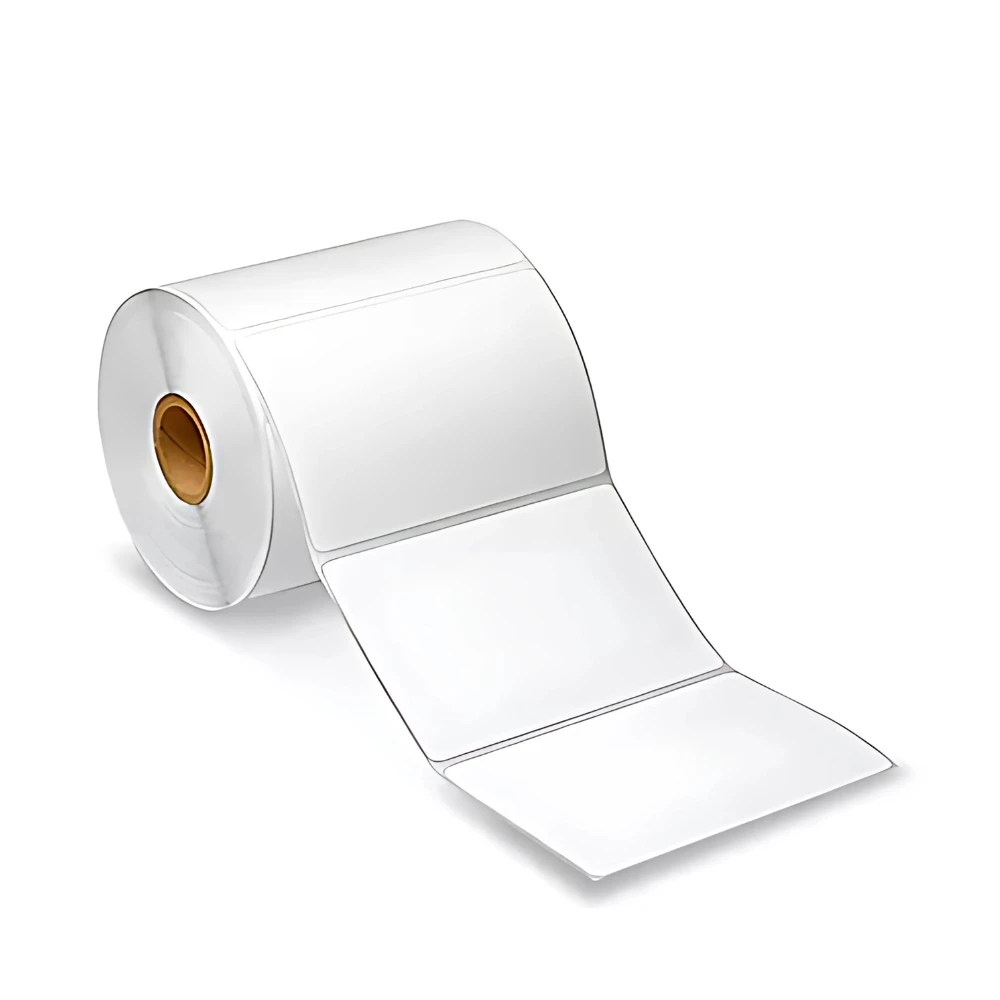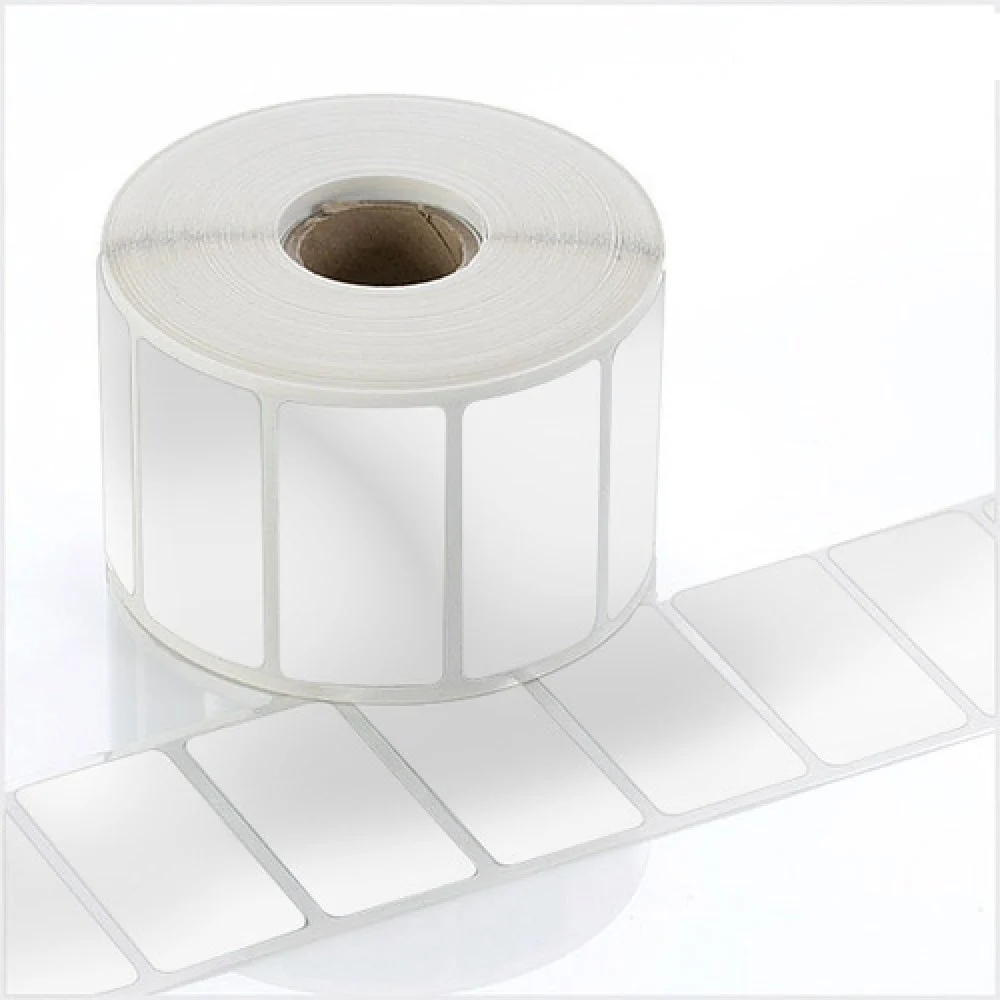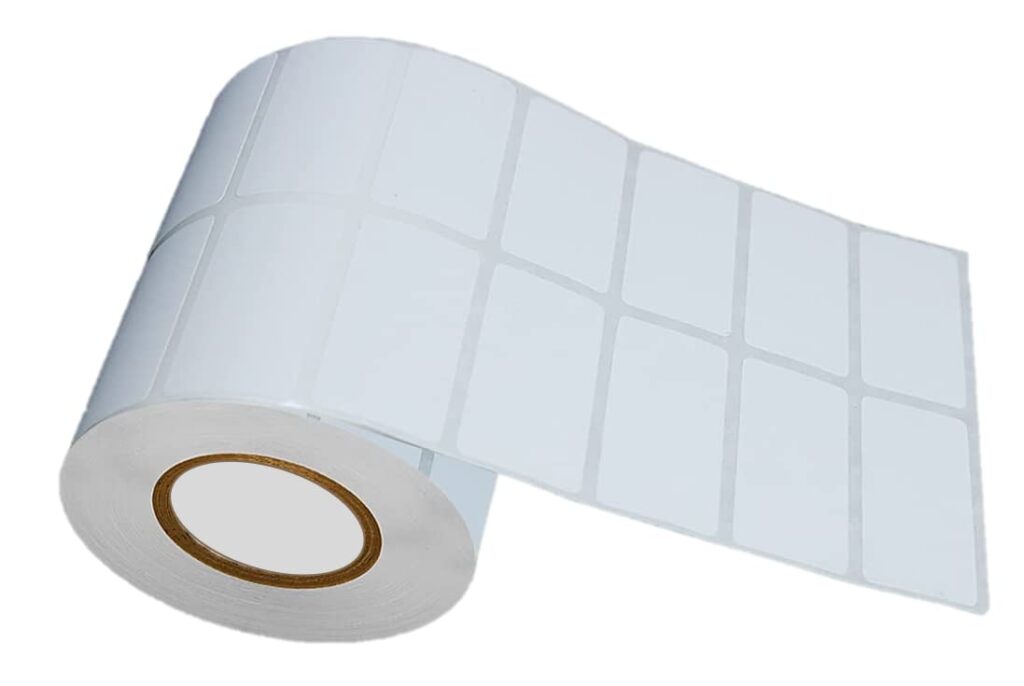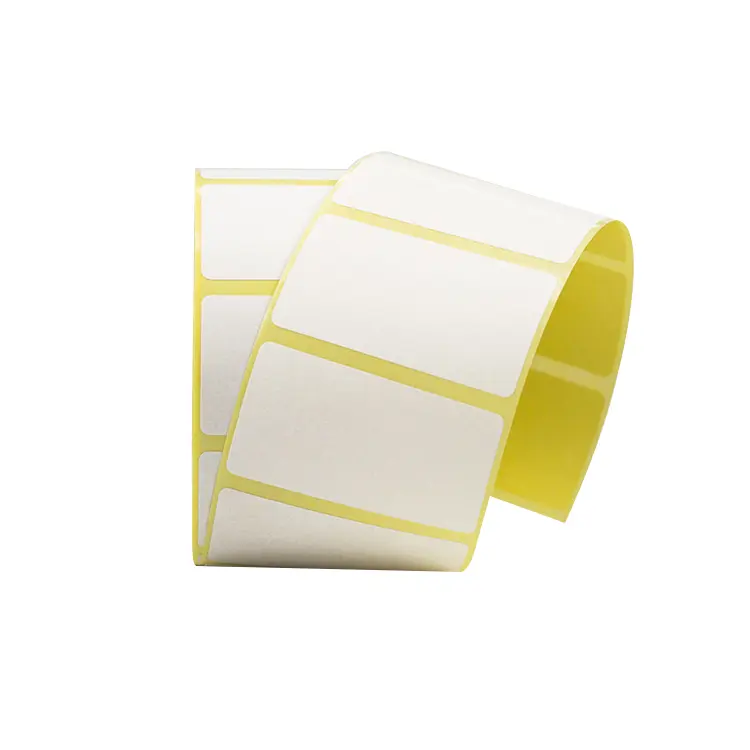Barcode labels are essential for efficient inventory management, providing a quick and reliable way to track products and streamline operations. They consist of a pattern of bars and spaces that encode alphanumeric data, which can be scanned by a device to retrieve product information. These labels are used in various industries like retail, logistics, and manufacturing.
Chromo paper is a coated, glossy paper known for its smooth surface and good printability.
It’s often used for labels that require a premium or high-quality look.
The glossy finish helps in producing sharp and vibrant prints, which is important for barcode readability.
These labels are made from chromo paper and are designed to have barcodes printed on them.
The smooth surface of chromo paper ensures that the barcode is clear and easy to scan.
They typically have a strong adhesive backing for secure attachment to various surfaces.
Chromo barcode labels are often used with thermal transfer.
Common Applications:

A polyester barcode label is a type of label made from polyester film, a synthetic material known for its strength, durability, and resistance to various environmental factors. Polyester (PET – Polyethylene Terephthalate) is a strong and resilient synthetic polymer.
It’s known for its dimensional stability, meaning it doesn’t easily stretch or shrink.
Polyester offers good resistance to moisture, chemicals, abrasion, and extreme temperatures.
These labels utilize the robust properties of polyester to create durable and long-lasting barcode labels.
They are designed to withstand harsh conditions where paper labels would typically fail.
Polyester labels often have a strong, permanent adhesive to ensure they stay affixed.
They are typically printed using thermal transfer printers with a resin ribbon to maximize durability of the printed barcode.
Common Applications:
Due to their durability, polyester barcode labels are used in demanding environments such as:
Industrial: Equipment labeling, machinery, component tracking.
Outdoor: Asset tracking, warning labels, durable product identification.
Chemical: Labeling containers with chemicals.
Automotive: Part marking, under-the-hood labels.
Electronics: Component and product identification.
Healthcare: Durable equipment labeling.

A direct thermal barcode label is a type of label that utilizes a heat-sensitive material for printing.
Direct thermal printing doesn’t use ink, toner, or ribbons.
The label material has a special heat-sensitive coating.
The direct thermal printer has a printhead that applies heat directly to the label surface.
Where the heat is applied, a chemical reaction occurs in the coating, causing it to turn black, thus creating the barcode and any other desired text or graphics.
Common Applications:
Direct thermal barcode labels are well-suited for applications with a shorter lifespan or where environmental factors are less of a concern, such as:
Shipping labels: For packages that are typically handled and delivered relatively quickly.
Receipts: Where longevity of the print isn’t crucial.
Event tickets and name tags: For single-use purposes.
Food labeling: Short-term labels like those for weigh scales.

A vinyl barcode label is a type of label made from vinyl, a durable and versatile synthetic plastic material.
Vinyl is a type of plastic (typically Polyvinyl Chloride or PVC) known for its flexibility, durability, and resistance to various elements.
It can be manufactured in different thicknesses and finishes (e.g., glossy, matte).
Vinyl offers good resistance to moisture, chemicals, UV light, and abrasion.
These labels leverage the robust properties of vinyl to create long-lasting and resilient barcode labels.
They are designed to withstand challenging environments where paper labels would easily degrade.
Vinyl labels typically have a strong adhesive backing, often permanent, to ensure they stay firmly in place.
They can be printed using various methods, including thermal transfer (often with resin ribbons for maximum durability), screen printing, and digital printing.
Common Applications:
Due to their excellent durability and resistance, vinyl barcode labels are commonly used for:
Outdoor Equipment: Asset tagging, warning labels.
Industrial Applications: Machinery labeling, chemical containers.
Marine Environments: Boat identification, equipment marking.
Harsh Environments: Where labels are exposed to moisture, chemicals, or abrasion.
Long-lasting Product Identification: Where the label needs to remain legible for an extended period.

Barcode labels are essential for efficient inventory management, providing a quick and reliable way to track products and streamline operations. They consist of a pattern of bars and spaces that encode alphanumeric data, which can be scanned by a device to retrieve product information. These labels are used in various industries like retail, logistics, and manufacturing.
Chromo paper is a coated, glossy paper known for its smooth surface and good printability.
It’s often used for labels that require a premium or high-quality look.
The glossy finish helps in producing sharp and vibrant prints, which is important for barcode readability.
These labels are made from chromo paper and are designed to have barcodes printed on them.
The smooth surface of chromo paper ensures that the barcode is clear and easy to scan.
They typically have a strong adhesive backing for secure attachment to various surfaces.
Chromo barcode labels are often used with thermal transfer.
Common Applications:

A polyester barcode label is a type of label made from polyester film, a synthetic material known for its strength, durability, and resistance to various environmental factors. Polyester (PET – Polyethylene Terephthalate) is a strong and resilient synthetic polymer.
It’s known for its dimensional stability, meaning it doesn’t easily stretch or shrink.
Polyester offers good resistance to moisture, chemicals, abrasion, and extreme temperatures.
These labels utilize the robust properties of polyester to create durable and long-lasting barcode labels.
They are designed to withstand harsh conditions where paper labels would typically fail.
Polyester labels often have a strong, permanent adhesive to ensure they stay affixed.
They are typically printed using thermal transfer printers with a resin ribbon to maximize durability of the printed barcode.
Common Applications:
Due to their durability, polyester barcode labels are used in demanding environments such as:
Industrial: Equipment labeling, machinery, component tracking.
Outdoor: Asset tracking, warning labels, durable product identification.
Chemical: Labeling containers with chemicals.
Automotive: Part marking, under-the-hood labels.
Electronics: Component and product identification.
Healthcare: Durable equipment labeling.

A direct thermal barcode label is a type of label that utilizes a heat-sensitive material for printing.
Direct thermal printing doesn’t use ink, toner, or ribbons.
The label material has a special heat-sensitive coating.
The direct thermal printer has a printhead that applies heat directly to the label surface.
Where the heat is applied, a chemical reaction occurs in the coating, causing it to turn black, thus creating the barcode and any other desired text or graphics.
Common Applications:
Direct thermal barcode labels are well-suited for applications with a shorter lifespan or where environmental factors are less of a concern, such as:
Shipping labels: For packages that are typically handled and delivered relatively quickly.
Receipts: Where longevity of the print isn’t crucial.
Event tickets and name tags: For single-use purposes.
Food labeling: Short-term labels like those for weigh scales.

A vinyl barcode label is a type of label made from vinyl, a durable and versatile synthetic plastic material.
Vinyl is a type of plastic (typically Polyvinyl Chloride or PVC) known for its flexibility, durability, and resistance to various elements.
It can be manufactured in different thicknesses and finishes (e.g., glossy, matte).
Vinyl offers good resistance to moisture, chemicals, UV light, and abrasion.
These labels leverage the robust properties of vinyl to create long-lasting and resilient barcode labels.
They are designed to withstand challenging environments where paper labels would easily degrade.
Vinyl labels typically have a strong adhesive backing, often permanent, to ensure they stay firmly in place.
They can be printed using various methods, including thermal transfer (often with resin ribbons for maximum durability), screen printing, and digital printing.
Common Applications:
Due to their excellent durability and resistance, vinyl barcode labels are commonly used for:
Outdoor Equipment: Asset tagging, warning labels.
Industrial Applications: Machinery labeling, chemical containers.
Marine Environments: Boat identification, equipment marking.
Harsh Environments: Where labels are exposed to moisture, chemicals, or abrasion.
Long-lasting Product Identification: Where the label needs to remain legible for an extended period.

© 2025 NIK Solutions.
Help?